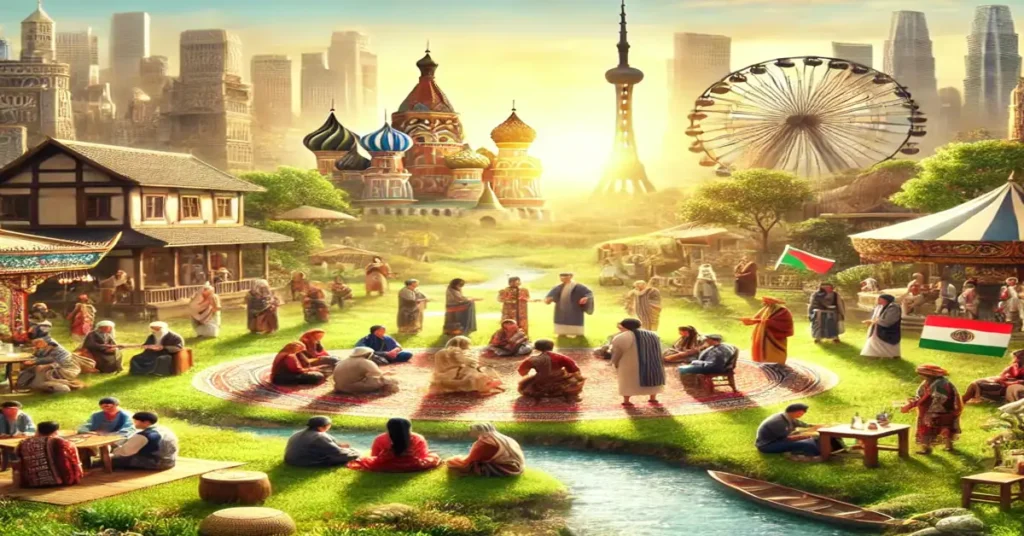In today’s increasingly interconnected world, cultural phenomena like pichuneter offer a unique way to bridge gaps, bring people together, and celebrate human creativity. With its roots steeped in South American traditions, pichuneter is more than just an event; it’s a vibrant community-driven celebration that has captivated the imaginations of people from all walks of life. It’s a phenomenon that brings together music, art, dance, storytelling, and community bonding, allowing participants to experience a sense of connection and shared cultural heritage.
For anyone interested in exploring the magic and significance of pic-huneter, this article delves deep into its origins, development, and how it has managed to spread beyond its local roots to become a global sensation. Whether you’re a curious traveler, an art enthusiast, or someone eager to experience diverse cultural celebrations, understanding pic-huneter will certainly enrich your cultural knowledge.
The Origins of Pichuneter: Where It All Began
The story of pichuneter begins in the heart of South America, where local communities celebrated their traditions through music, dance, and storytelling. Emerging from small villages, pic-huneter first served as a way for residents to come together and foster a sense of belonging. It was an event filled with life, color, and spirit, offering a platform for individuals to showcase their talents, share their experiences, and nurture community bonds.
The term pichuneter itself comes from indigenous South American languages, with a meaning that loosely translates to “gathering” or “community festival.” Initially, it was celebrated as a local tradition with little attention outside the immediate community, but over time, as the gatherings grew in scale, their appeal broadened. The festival’s combination of traditional and contemporary forms of expression made it attractive not only to locals but to people from neighboring areas and countries who were eager to experience authentic cultural celebrations.
The Role of Creativity and Expression
A key element that makes pic-huneter unique is its emphasis on creativity and self-expression. Unlike other festivals that may follow strict guidelines or protocols, pic-huneter encourages spontaneity and creativity. The event invites participants to express themselves through various art forms, whether that be painting, crafting, storytelling, or performing music and dance. This creative freedom allowed pichuneter to grow into a fertile ground for artistic innovation and cultural exchange.
From Local to Global: Pichuneter’s Expansion
Though pic-huneter began as a humble community gathering, its appeal quickly transcended local borders. As more travelers and cultural enthusiasts from around the world visited South American regions, they became enchanted by the festival’s authentic, inclusive, and joyous nature. Word about pic-huneter began to spread internationally, and soon enough, the festival found its way into other countries, bringing with it an air of South American authenticity that was infused with each new culture’s unique twist.
In countries like Argentina and Chile, pichuneter evolved into an energetic event celebrated in public plazas and parks, where locals and visitors alike would gather to enjoy the festivities. Each year, the event saw an increase in the number of attendees, with more creative elements such as street performances, visual arts exhibitions, and cultural workshops being incorporated.
Meanwhile, in cities like Barcelona, pic-huneter took on a more artistic and avant-garde character. The city’s famous art scene, combined with its Mediterranean flair, added a new layer of creativity to the festival. Local artists used the platform to showcase their unique work, blending traditional pic-huneter elements with contemporary art forms, thus enhancing the festival’s reach and appeal to a global audience.
The Key Elements of a Pichuneter Festival
1. Music and Dance
Music and dance play a central role in pic-huneter. These performances are not only for entertainment but also serve as a means of storytelling. Traditional instruments, such as drums and flutes, are often used alongside modern-day electronic music to create an eclectic soundscape that reflects the blending of old and new. Dance performances, from traditional folk dances to more contemporary styles, provide visual representations of local stories, myths, and everyday life.
In more contemporary versions of pic-huneter, dance groups often come together to perform choreographed routines that fuse traditional and modern dance, making it a dynamic and engaging experience for festivalgoers.
2. Art Exhibitions and Installations
Art is another defining feature of pic-huneter, with local and international artists using the festival as a platform to showcase their work. Traditional handcrafts, including woven textiles, pottery, and sculptures, are commonly displayed, while contemporary art installations push the boundaries of creativity. Participants often walk through interactive art spaces where they can engage directly with the pieces, adding a more immersive experience to the festival.
In some versions of the festival, the audience is invited to contribute to collaborative art projects, such as large-scale murals or group performances. This hands-on approach ensures that pic-huneter is more than just a spectacle—it’s a celebration of community, interaction, and collective creativity.
3. Storytelling
Storytelling is a cherished tradition in pichuneter, passed down from generation to generation. It serves as a way to keep the community connected to its roots and history. Elder members of the community often gather to share tales of the past, mixing folklore with personal anecdotes, creating a shared sense of identity and cultural memory.
As pichuneter spread globally, storytelling evolved into more theatrical performances and multimedia presentations. These stories often explore themes of identity, migration, social justice, and environmental stewardship, making pic-huneter a platform for raising awareness about global issues while maintaining its traditional narrative roots.
4. Workshops and Interactive Sessions
Another important feature of pichuneter is the variety of workshops and interactive sessions available to participants. These sessions often involve craft-making, drumming lessons, dance tutorials, and cultural awareness talks, among others. This element of education not only helps festivalgoers learn new skills but also deepens their appreciation for the rich cultural tapestry behind pic-huneter.
In recent years, workshops have been added on topics like sustainable practices, technology in art, and social responsibility, reflecting the evolution of the festival in response to contemporary issues.
5. Culinary Delights
No festival is complete without food, and pichuneter is no exception. Traditional South American cuisine takes center stage, with stalls offering a range of delectable treats, from empanadas to grilled meats, ceviche, and tropical fruits. As the festival has gone global, new flavors have been added to the mix, making the culinary experience diverse and exciting. Food plays a significant role in the festival as it brings people together in shared cultural enjoyment, just as much as the music and art do.
The Modern-Day Impact of Pichuneter
1. Cultural Exchange and Inclusivity
Pichuneter has become a powerful symbol of cultural exchange. It bridges the gap between different communities, allowing for the sharing of cultural practices, ideas, and traditions in a setting that celebrates diversity. The festival’s evolution from a local village celebration to a global phenomenon highlights its ability to adapt and incorporate new influences without losing its essence.
Its inclusive nature has made pic-huneter especially appealing to marginalized communities seeking a space to express themselves and celebrate their heritage.
2. Social and Environmental Awareness
In recent years, pichuneter has taken on the mantle of social and environmental responsibility. Workshops and discussions at the festival often focus on pressing issues like climate change, conservation, and social justice. Attendees are encouraged to reflect on their role in the world and how they can contribute to creating a better, more sustainable future.
By addressing global challenges through creative expression, pic-huneter inspires action while fostering a sense of community responsibility.
3. Economic Benefits to Local Communities
As the popularity of pichuneter continues to grow, it has also brought economic benefits to the communities that host the festival. Local artisans, performers, and businesses benefit from the influx of visitors, providing a boost to the local economy. The festival serves as a platform for these communities to showcase their talents, products, and services, all while attracting international attention.
4. A Platform for Emerging Artists
One of the key contributions of pichuneter is its support for emerging artists. By providing a platform for both established and up-and-coming creators, the festival helps new voices find an audience. This democratization of art and creativity ensures that pichuneter remains a vital space for innovation and self-expression.
The Global Appeal of Pichuneter
The magic of pichuneter lies in its adaptability. While it retains its core elements of music, art, storytelling, and community, it has the flexibility to evolve and embrace new ideas. Whether in the bustling streets of South America or the artistic quarters of European cities, pichuneter resonates with people from all walks of life. It is both a celebration of tradition and a reflection of contemporary issues, making it a living, breathing festival that grows with every iteration.
For travelers, cultural enthusiasts, and festivalgoers alike, pichuneter offers a rich experience that is as enlightening as it is entertaining. It is a celebration that transcends borders and identities, inviting everyone to come together in a shared appreciation for creativity, culture, and connection.
FAQs About Pichuneter
1. What is Pichuneter?
Pichuneter is a cultural phenomenon originating from South America, involving community-driven festivals that celebrate art, music, dance, storytelling, and social connection. It has evolved into a global event, promoting cultural exchange and creativity.
2. Where did Pichuneter originate?
Pichuneter began in small villages across South America, particularly in countries like Argentina and Chile. Initially a local tradition, it gradually spread internationally due to its unique cultural appeal.
3. How is Pichuneter celebrated today?
Today, pichuneter is celebrated worldwide, with each region adding its unique twist. The festival includes musical performances, art exhibitions, storytelling sessions, workshops, and culinary experiences, making it a multifaceted event.
4. Who participates in Pichuneter?
A wide variety of people participate in pichuneter, including local residents, international travelers, artists, musicians, and storytellers. Its inclusive nature allows people of all backgrounds to come together and celebrate creativity and community.
5. What makes Pichuneter different from other festivals?
Pichuneter stands out for its focus on community involvement, creativity, and cultural exchange. Unlike many festivals that prioritize entertainment, pichuneter encourages active participation, learning, and interaction, making it a more immersive experience.
6. How can I participate in Pichuneter?
To participate in pichuneter, you can attend one of the festivals held in various cities around the world. You can also contribute by taking part in workshops, volunteering, or performing if you’re an artist or musician. Stay tuned to cultural event calendars to find a pichuneter celebration near you!







